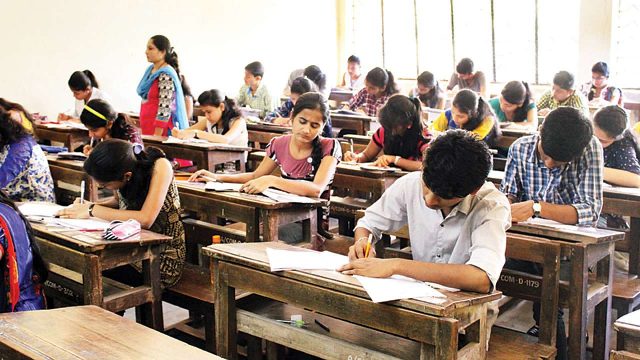When you’re a kid, you learn quickly that there are loads of new life skills you’ve gotta get down before you enter the grown-up world. Learning to tie your own shoes and of course, learning to tell the time on an analog clock (the normal kind with moving hands and hours marked with numbers 1 to 12).
Apparently, schools in the UK are throwing their hands up over kids who can’t tell the time on analog clocks. Is this the end of an era?
Some UK schools are planning on ditching the analog clocks for test rooms because the so-called new generation who are raised on digital clocks are not able to read them and are stressed about time running out during tests.
This got late night talk show host Jimmy Kimmel wondering whether children in the US can tell time, the old-fashioned way.
Although it’s really funny, it’s sad at the same time.
To what extent is the technology to be blamed?
Despite smartphones and other technological advances, one object which has withstood the test of time is the analog clock. But this again presents us with an example of how technology has prevailed again.
“The current generation is used to seeing a digital representation of time on their phone, on their computer. Nearly everything they’ve got is digital so youngsters are just exposed to time being given digitally everywhere” said Malcolm Trobe, deputy general secretary of the U.K.’s Association of School and College Leaders.
Living in a country like India, with over 460 million internet users, where the digital population is the second highest in the world and teens between 13-17 years constituting a whopping 95% of the internet population, we wonder whether the Indian teens are any better than those in the UK and the United States of America.

Related: In Pics: Indian IT Professionals Protest Against Green Card Backlog In USA
The Scenario in India
In a survey conducted in 2016, it was found out that only 1 out 10 school going children in India owned a watch, while only 1 in 5 students could read the analog versions.
To put things into perspective, reading the analog watch is usually taught to us as a part of primary education. For a partly-educated teen who has the basic knowledge of numbers, a digital watch is a better way for him to identify time rather than using the old traditional way.
Also, the quality of education and the number of children getting primary education in India as compared to the UK and USA presents a contrasting difference.
The mental ability between them poses a challenge. So if the teens from USA cannot read the analog clock, we should be really concerned about children of our own country.
On the other hand, India being a poor country, not everyone can afford a digital clock nor do they like to change their old ways, analog clocks still hold a vital importance in the future. So teaching children time-telling through the traditional way still makes sense.
But this problem of removal of analog clocks in test’s rooms present a little to no problem to Indian students considering the poor facilities of schools where we hardly see an analog watch let alone seeing a digital clock and living in a country where we resort to our teachers who usually tell us how much time is left, this policy makes little to no sense.
The debate should be centred upon the point that how can we stop this problem in the future as time-telling is the basic attribute that a teen should possess. The thing that one is confident of is that analog watches are going nowhere in the coming paradigm.
Image Credits: Google Images
Sources: Today Show, Fox News, ABC27
You’d also like to read:
Breakfast Babble: Why Does Everyone Want To Act Politically Correct On Social Media?


































